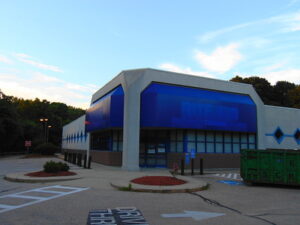In the last couple of posts, I have written about the state of community college education, and why the current approach to career and transfer education isn’t working out. What’s the solution for community colleges, and is it possible to restore value to a two-year degree?
There’s no one correct answer, but it’s clear that continuing to do the same thing isn’t working. Community college administrators need to recognize that their “competition” is not limited to other schools. Recent high school graduates can enter the workforce directly and make nearly as much money as they could with a two year degree.
Identification of and investment in new academic programs that have the potential to generate living wages for workers with dependents is essential. In Washtenaw County right now, that’s about $43 per hour. Sectors that currently meet that benchmark include:
- Management occupations
Sectors that approach that benchmark include:
- Computer and mathematical occupations
- Architectural and engineering occupations
- Legal occupations
- Healthcare practitioners
Just as importantly, sectors that include the lowest annual wages in Washtenaw County include:
- Food preparation and food service
- Personal care and service
- Healthcare support
- Sales and related occupations
- Building and Grounds cleaning and maintenance
Community college administrators must rethink those occupational education programs that do not lead to a living wage for individuals. In Washtenaw County, that’s $40,000 per year. Eliminating programs that lead to low-wage occupations and substituting new programs that meaningfully increase a worker’s salary is one way to add value to a community college degree.
Rethinking workforce development at community colleges
This also means avoiding non-degree workforce development programs that lead to low-wage work. There is no point in participating in programs that train people for full-time work that leaves them unable to truly escape poverty. That’s not why the people of Washtenaw County fund WCC. Low-wage employers should be left to train their own workforce, without any form of public subsidy.
Additionally, community college administrators must work closely with universities to ensure that transfer students are adequately prepared both academically and economically for the transition to a four-year program. Third, they must develop retention strategies to help reduce the percentage of students who fail to complete a degree program.
This isn’t a tall order for administrators who are engaged in the mission of adult education. But it does require them to worry less about opening new buildings and more about opening new programs. Success at the community college level doesn’t involve wasting money on revenue generation schemes that don’t relate to the college’s academic mission. This includes things like the Health and Fitness Center and plans to build a “convention center” and a hotel. These strategies will not help Washtenaw Community College students, nor will they help Washtenaw County. So let’s not waste time or resources on them.
Washtenaw County needs real, focused strategies to attract new employers to Washtenaw County. We need a long-term plan to deal with the impact of climate change and the potential for a massive shift in the nation’s population. In light of this, planning to put “retail outlots” in the WCC parking lots is just bush league nonsense. If that’s the best idea this administration can come up with, it’s time for a new administration.
Photo Credit: TTFCA , via Flickr


























